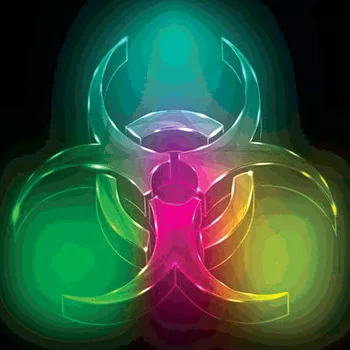Proposition 65’s “Naturally Occurring” Exemption

Food and supplement manufacturers and retailers selling products in California are frequent targets of Proposition 65 actions. Proposition 65, known as the “Safe Drinking Water and Toxic Enforcement Act,” was passed by California voters as a ballot initiative in 1986. It is a toxics right-to-know law requiring warnings on products sold in California if they contain certain chemicals that are on a state list of “known” carcinogens or reproductive toxicants.[1] When Proposition 65 chemicals are found in food, but are proven to be “naturally occurring,” they provide an exemption to the requirement to warn. Unfortunately, the current regulations make it difficult, if not impossible, to prove the defense. Pleasantly surprising for many in the nutritional supplement industry that are increasingly mired in expensive and often frivolous, alleged violations, the state agency overseeing Proposition 65, the Office of Environmental Health Hazard Assessment (OEHHA), proposed in late 2014 to take a fresh look at reforming the defense. It has yet to provide any specific proposals.
Proposition 65 and the “Naturally Occurring” Exemption
An update to this exemption is sorely needed. The most common Proposition 65 chemical noticed in violations, in both food and nonfood products alike, is lead. Lead is listed as a “reproductive toxicant,” and Proposition 65 imposes a stringent (and some would argue a scientifically dubious) maximum level of 0.5 micrograms of lead per day as safe. This level is considered a “safe harbor.” Any level over that requires a warning or an exemption, allowing the defendant to avoid a warning. This allowable lead level is particularly burdensome to manufacturers and distributors of food-based products and nutritional supplements because both the natural environment (soil and water) and some common dietary elements (such as calcium) already contain lead naturally, meaning that often a product can exceed the safe harbor lead level allowed in Proposition 65 based on average daily dosing.
The naturally occurring exemption under Proposition 65 provides that “[h]uman consumption of a food shall not constitute an ‘exposure’ for purposes of [Proposition 65] to the extent that the person responsible for the exposure can show that the chemical is naturally occurring in the food.”[2] If a company’s product contains over 0.5 micrograms of lead and the company can prove the lead is naturally occurring, it can avoid placing warnings.
Proposition 65’s Regulations Make Proving the Defense Difficult
One might reasonably think that the naturally occurring exemption provides protection to many companies that manufacture, distribute or sell food and nutritional supplements in California. After all, most companies in this industry simply obtain the product from a supplier and sell it—they do not add chemicals to it in their manufacturing process. In fact, the voter pamphlet for Proposition 65 suggested that the intent of the proposition’s drafters was to require warnings where toxicants were intentionally added.[3]
After the voters passed Proposition 65, however, a state agency wrote the regulation creating the naturally occurring exemption for food given that the statute itself made no distinction for the unique situation of food products. The regulation lays out a stringent three-part requirement a defendant must meet to be able to invoke the defense: (1) prove the “natural background” of the chemical in the area where the food is grown or raised; (2) prove that the chemical did not result “from any known human activity;” and (3) prove that by Good Manufacturing Practices, the chemical exists in its lowest feasible level.[2]
What this means in practice is that to show a chemical is naturally occurring requires the company to prove the chemical is not added as a result of any human activity and that Good Manufacturing Practices could not prevent the chemical from being part of the product. This places the burden on the company and not a plaintiff bringing the suit, and it means proving two difficult negatives. Pollution, or runoff that causes chemicals to leach into the groundwater from miles away, or that falls as rain, can be considered the result of “human activity” dating far back in time. The end result is that the company making the product is likely responsible for chemicals found in the constituent crops caused by some form of human activity, regardless of whether these chemicals are recently deposited or the result of deposits in the soil over many years, perhaps tens, hundreds or even thousands.
The Difficulty of Proving No “Human Activity”
Underscoring the difficulty of proving the naturally occurring exemption is the fact that there is just one case where a court has found this defense was proven.[4] In this case, plaintiffs targeted tuna fish manufacturers, alleging Proposition 65 violations over methylmercury in their tuna products. Plaintiffs argued that tuna fish cans should carry Proposition 65 warnings because methylmercury is a reproductive toxicant on the Proposition 65 list. The defendants were able to provide extensive peer-reviewed studies focusing on historic levels of methylmercury in the ocean environment to the trial court’s satisfaction. The trial court’s decision granting the exemption was upheld by the appellate court.
Though a good result, this case took a multimillion-dollar coordinated endeavor by the massive, worldwide tuna industry. These large defendants undertook an extensive—and expensive—defense, relying on detailed testimony and historic evidence with scientific expert opinion. There was also a wealth of existing scientific data on relevant ocean life already in the public domain that the defense was able to utilize with the analysis of expert witnesses.
The vast majority of companies are not in an economic position to mount such a successful defense. A more recent case illustrates the more typical challenges companies face in trying to prove the naturally occurring exemption. That trial involved lead in fruit products.5 In this case, although there were multiple defendants claiming that neither they nor their growers added lead to the food products or ingredients, the court ruled that the defendants’ evidence was insufficient and that they “failed to adduce evidence showing the proportion of lead in their products which is naturally occurring (distinguishing and then proving man-made versus pre-existing levels of lead)” and that they “could have done more (through manufacturing processes) to reduce the lead in their products to the lowest level currently feasible.”[5]
How to Reform the Naturally Occurring Defense
Reform of the naturally occurring exemption should be explored by OEHHA to make it effective and winnable for more than a select few. The 1986 voter pamphlet and the Proposition 65 statute enacted did not suggest voters wanted to treat industrial poisons and toxins the same way as food, already regulated by the U.S. Food and Drug Adminstration, which might contain small quantities of chemicals due to many years of the ecosystem’s development. How might the naturally occurring defense be changed so that it still protects the public but is also fairer to food and supplement makers? Here are a few points that should serve to drive discussion:
• No intentional adding of chemicals. Should a manufacturer who brings a product from a farm or supplier to market without intentionally adding Proposition 65 chemicals in the process receive a break? If the company and its vendors can establish that they each added no Proposition 65 chemicals in their respective manufacturing processes to the product, should that be a factor in determining whether there is a violation, regardless of the many years of prior human activity?
• Organics. The rise of the organic food and supplement industry continues to drive change in the market. To be certified as an organic grower, one must comply with various specific and detailed federal and state regulations regarding pesticides and growing practices, among other things. If a manufacturer can establish it has been certified as 100 percent organic under existing regulations, should it get some credit or exemption from Proposition 65?
• Food and supplements are unique. The 0.5 micrograms per day safe harbor limit applies uniformly to products sold in California, whether the product is a table lamp, a leather handbag or a nutritional supplement. But one size does not fit all when it involves food and supplement manufacturers, because while a table lamp maker can source a vendor who uses no lead in lamps, most nutritional supplement makers can reduce lead but cannot go “lead-free” given the natural occurrence of the chemical, and defendants cannot correct thousands of years of chemicals added to the ecosystem.
• Is the safe harbor amount good science? Though a recently filed plaintiffs’ lawsuit seeks to find any level of lead actionable under Proposition 65, many manufacturers and trade groups have argued that the 0.5-microgram safe harbor level stabled under Proposition 65 decades ago is unreasonably stringent and not supported by acceptable science when compared with the overall total amount of lead consumers ingest from a variety of other foods every day and when compared with various national and international health organizations’ recommendations allowing higher levels of lead as safe and acceptable.
What’s Next?
Thus far, there is no timeline on when OEHHA might propose revised regulations. The agency previously circulated draft regulations that, if enacted, would dramatically change Proposition 65’s warning requirements, and these are likely to be adopted later this year as part of an ongoing comprehensive revision to the law begun in 2013. Hence, by the end of the year, we may also see proposed regulations targeting the naturally occurring exemption as part of this overall push. We will continue to monitor and report on these very important and potentially far-reaching developments.

References
1. Health & Human Safety Code, Section 25249.6.
2. California Code of Regulations, Title 27, Section 25501(a).
3. Ballot pamphlet. General election, November 4, 1986, argument in favor of Proposition 65, p. 54.
4. People ex. rel. Brown v. Tri-Union Seafoods, LLC. 171 Cal. App. 4th 1549 (2009).
5. Environmental Law Foundation v. Beech-Nut Corporation. Super. Ct. Alameda County, No. RG11597384 (2013).
Looking for quick answers on food safety topics?
Try Ask FSM, our new smart AI search tool.
Ask FSM →








